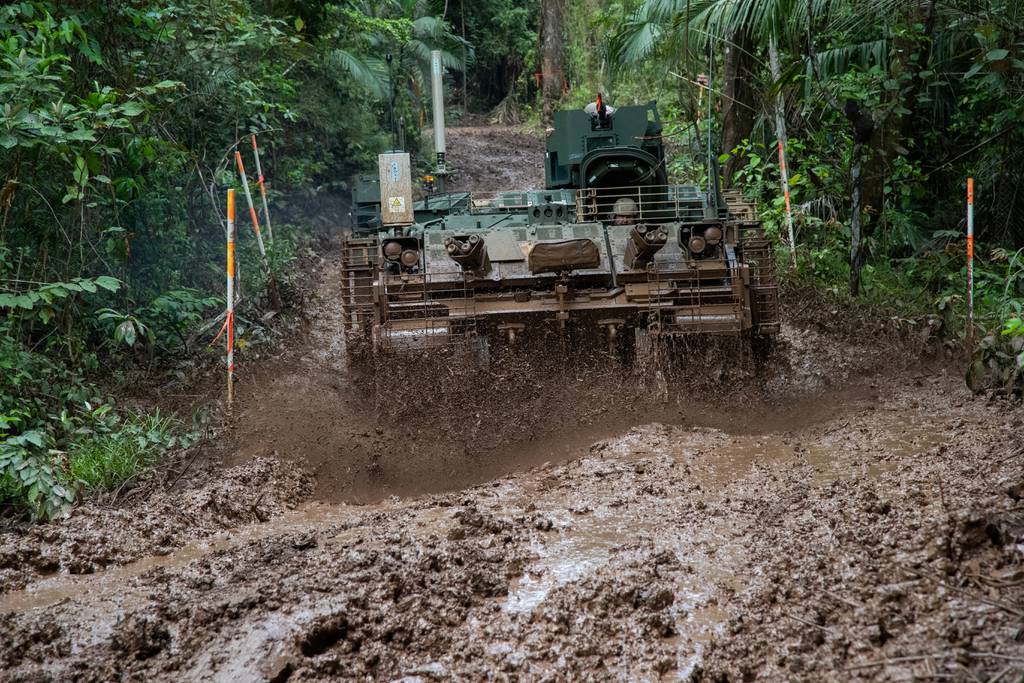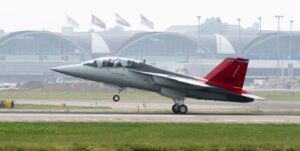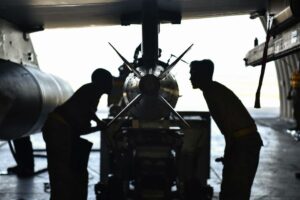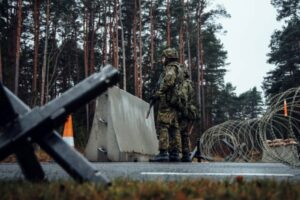
WASHINGTON — The U.S. Army this week approved the Armored Multi-Purpose Vehicle for full-rate production, a spokesperson for the service’s Program Executive Office Ground Combat Systems told Defense News.
The full-rate production contract award to AMPV-maker BAE Systems is pending, the spokesperson said.
The Army delivered the first AMPVs to the 1st Armored Brigade Combat Team, 3rd Infantry Division at Fort Stewart, Georgia, in March, marking the beginning of the end for the M113 armored personnel carriers used since the 1960s. BAE Systems said at the time that a full-rate production decision was expected by the end of that month.
Ensuring production quality is “critical,” the spokesperson said, adding, issues during low-rate initial production are resolved and vehicles are compliant with required specifications. “It is key to note that there were no impacts to AMPV fielding activities.”
In advance of the full-rate production decision, the Army awarded BAE a $245.6 million contract in March and another $120 million contract Aug. 3 to buy long-lead items to keep production moving.
The Army’s fiscal 2024 budget request released in March called for a lower number of AMPVs than planned a year ago, rather than the anticipated ramp-up. The Army had planned to buy 131 AMPVs in FY24 for $682.4 million, according to its FY23 budget documents, but instead the service’s base budget request asked for 91 vehicles for $555 million.
However, while the base budget indicated a cut, the plan to ramp up AMPV procurement will be possible through congressionally approved supplemental funding provided to the Army to cover some of the cost of sending about 400 M113s to Ukraine. The service plans to buy a total of 154 new AMPVs to replace those M113s using the supplemental funding.
AMPV product manager Lt. Col. Nate Costa said earlier this year the Army will buy 197 AMPVs total in FY24 when combining base budget and supplemental funding, which roughly doubles the number of the vehicles funded in the base budget.
Congress approved funding in FY23 to build 72 vehicles in its first year of production.
Both the House and Senate defense appropriations subcommittees proposed cutting the AMPV program in their FY24 spending bills by similar amounts: The House appropriators proposed a $163 million cut to the program, and Senate appropriators proposed a $155 million cut, citing production capacity concerns.
The AMPV program entered low-rate production in January 2019, but the program office indicated last year that delivery of the first vehicles would be delayed by two months, and the completion of the production qualification testing would be delayed by seven months due to tooling and assembly line challenges at BAE’s York, Pennsylvania, production facilities. Coronavirus pandemic complications further slowed the effort.
The Army in recent years, due to initial production struggles at York, had downgraded the plan to produce a brigade set annually. But the service has been able to restore the original fielding plans back to a brigade and a half each year — which equates to ramping up production from 12 vehicles a month to 16 over the next two years, Costa said in March.
Jen Judson is an award-winning journalist covering land warfare for Defense News. She has also worked for Politico and Inside Defense. She holds a Master of Science degree in journalism from Boston University and a Bachelor of Arts degree from Kenyon College.
- SEO Powered Content & PR Distribution. Get Amplified Today.
- PlatoData.Network Vertical Generative Ai. Empower Yourself. Access Here.
- PlatoAiStream. Web3 Intelligence. Knowledge Amplified. Access Here.
- PlatoESG. Automotive / EVs, Carbon, CleanTech, Energy, Environment, Solar, Waste Management. Access Here.
- BlockOffsets. Modernizing Environmental Offset Ownership. Access Here.
- Source: https://www.defensenews.com/land/2023/08/04/us-army-greenlights-armored-vehicle-for-full-rate-production/
- :has
- :is
- $UP
- 12
- 16
- 1st
- 2019
- 2024
- 3rd
- 70
- 72
- 8
- 91
- a
- Able
- About
- According
- activities
- adding
- advance
- ago
- also
- amounts
- an
- and
- Annually
- Another
- Anticipated
- appropriations
- approved
- ARE
- Army
- Arts
- Assembly
- At
- Aug
- award
- award-winning
- awarded
- back
- BAE Systems
- base
- BE
- been
- Beginning
- Bills
- boston
- Boston University
- budget
- build
- but
- buy
- by
- called
- Capacity
- carriers
- challenges
- College
- combat
- combining
- completion
- compliant
- Concerns
- contract
- Cost
- cover
- covering
- Cut
- cutting
- decision
- Defense
- Degree
- Delayed
- delivery
- Division
- documents
- doubles
- Downgraded
- due
- during
- each
- Earlier
- effort
- end
- entered
- equates
- executive
- expected
- facilities
- First
- Fiscal
- For
- Fort
- from
- funded
- funding
- further
- Georgia
- Ground
- had
- Half
- holds
- House
- HTTPS
- images
- Impacts
- in
- indicated
- initial
- inside
- instead
- issues
- items
- ITS
- January
- journalism
- journalist
- jpg
- Keep
- Key
- Land
- Last
- Last Year
- Line
- lower
- manager
- March
- marking
- master
- million
- Month
- months
- moving
- New
- news
- next
- no
- number
- of
- Office
- original
- over
- pandemic
- pending
- Pennsylvania
- Personnel
- plan
- planned
- plans
- plato
- Plato Data Intelligence
- PlatoData
- possible
- procurement
- produce
- Product
- product manager
- Production
- Program
- proposed
- provided
- qualification
- quality
- Ramp
- ramping
- rather
- recent
- released
- replace
- request
- required
- resolved
- restore
- roughly
- s
- Said
- Science
- Senate
- sending
- service
- set
- seven
- she
- similar
- since
- some
- specifications
- Spending
- spokesperson
- Struggles
- Systems
- team
- Testing
- than
- that
- The
- their
- There.
- this
- this week
- this year
- those
- Through
- time
- to
- Total
- two
- u.s.
- university
- us
- us army
- used
- using
- vehicle
- Vehicles
- was
- week
- were
- when
- which
- while
- will
- with
- worked
- would
- year
- years
- york
- zephyrnet












